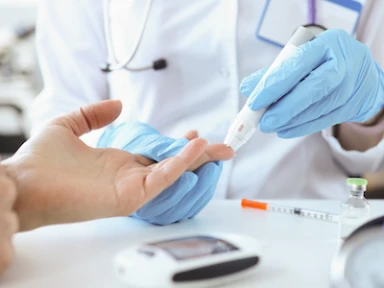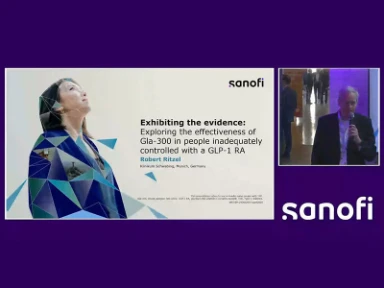Inside Diabetes: ATTD Edition | Type 1 Diabetes

The 17th International Conference on Advanced Technologies and Treatments for Diabetes (ATTD) concluded on March 9, 2024. The congress was a resounding success, drawing more than 5000 participants from 96 countries around the world.
Attendees had the opportunity to engage with leading experts, researchers, and industry professionals to discuss advancements in diabetes care, including new technologies, treatment modalities, and research findings. The conference covered a broad spectrum of topics such as CGM, insulin delivery systems, digital health solutions, and emerging therapies.
We are delighted to present some notable highlights distilled from all four days of ATTD 2024, with a particular emphasis on T1D.
JDRF - international consensus monitoring guidance for presymptomatic (early stage) type 1 diabetes
Session chair: Anastasia Albanese-O'Neill
Speakers: Moshe Phillip, Linda DiMeglio, Kirstine Bell, Emanuele Bosi
- It is important to monitor people with stage 1 and 2 T1D to prevent DKA and initiate immunomodulation therapy. The consensus guidance advocates community partnership, emphasizing the importance of viable monitoring modalities.
- The primary goal of education is to prevent DKA, emergency visits for intensive care and to improve risk perception with understanding of outcomes and interventions. This assists individuals and families in managing psychosocial impacts.
- The ‘D1CE SCREEN’ is a planned pilot study that will be conducted in ~5000 children who will be screened for T1D and celiac disease by their family pediatricians in Italy. The aim is to prevent DKA and identify early T1D, while also assessing feasibility and acceptability of universal screening in general population.
Navigating advancements in screening and monitoring towards the future in autoimmune T1D
Session chairs: Chantal Mathieu
Speakers: Chantal Mathieu, Colin Dayan, Emanuele Bosi, Sanjoy Dutta
- T1D, a chronic autoimmune disease with metabolic implications, progresses with the development of anti-islet antibodies (IAA, IA2, GADA and ZnT8A). Positive testing for ≥2 autoantibodies alongside dysglycemia indicates high likelihood of advancing to stage 3 T1D, especially in younger population (<12 years). Current research focuses on modifying T1D progression using DMT.
- Screening for T1D autoantibodies, as demonstrated in the Fr1da and DPV registries, reduces the risk of DKA and associated complications. This offers HCPs an opportunity to educate patients and caregivers about available preventive treatments. Worldwide, various screening initiatives are underway, with Italy pioneering general population screening for T1D and celiac disease in children and adolescents.
- Early screening and monitoring for T1D can reduce the psychological burden of diagnosis. Despite the benefits, low awareness among HCPs and families, coupled with limited screening access, poses a primary barrier to effective programs. JDRF is working to expand screening and provide support systems to HCPs through conferences, clinic-based training, and upcoming consensus guidelines. The T1Detect pilot clinic program, funded by JDRF, aims to improve screening access among under-represented groups and increase HCP and staff capacity.
- Identifying individuals at a high risk for T1D through general population screening is crucial in the early detection of the disease. The TN10 PREVENTION study indicated that teplizumab, the first DMT approved by FDA, showed an early and sustained effect on delaying T1D progression.
ATTD in partnership with The diaTribe Foundation: Is it time for time in tight range?
Moderators: Tadej Battelino, Natalie Bellini, Natasa Bratina, Chiara Fabris, and Helena Rodbard
- Raising the bar for TITR may be associated with a loss of trust among PwD, highlighting the need for caution when setting TITR targets. Despite recognizing the beneficial effects of higher TITR in euglycemic conditions, it is crucial to adopt a more open-ended approach in target setting.
- Technological and therapeutic advancements offer an opportunity to consider TITR as a valuable glycemic metric alongside TIR in clinical trials.
- Aligning treatment goals with PwD and their family members requires a comprehensive understanding of developments in diabetes technology and treatment. All family members must share the same goal and belief in order to ensure successful alignment.
- Glycemic targets need to be tailored and personalized for each individual. It is crucial to educate the HCP on effectively collaborating with PwT1D and gaining their trust. Additionally, PwD should be made aware of new target ranges and understand TITR as the new goal for optimizing treatment together as a team.
Time-in-range vs. time-in-tighter-range: parent and teen experiences with CGM metrics for pediatric T1D management
Presenter: Molly Tanenbaum
- This study conducted in PwT1D, exploring their perception and navigation of CGM metrics, particularly focusing on TIR and TITR using qualitative methods.
- Study results revealed diverse perspectives and psychological impacts among participants, with some favoring narrow ranges for safety, while others expressed concerns about stress and lifestyle constraints.
- Participants expressed the need for greater support and guidance from HCPs to effectively manage their diabetes. It was underscored that involving input from parents and caregivers is crucial when making adjustments to TIR and TITR goals. This highlights the importance of a collaborative approach for improved T1D management and overall patient satisfaction.
Screening, intervention and prevention of type 1 diabetes
Session chair: Linda DiMeglio
Presenter: Emanuele Bosi, Laura Jacobsen, Jennifer L. Sherr, Raffaella Buzzetti
- The Teplizumab prevention trial demonstrated that teplizumab treatment prolonged the pre-symptomatic phase and led to a delay in the median time to clinical T1D diagnosis. The UNISCREEN study investigated the potential of capillary blood screening in the general population for early T1D detection, offering advantages like acceptability, feasibility, and reliable autoantibody assays.
- Identifying DMT responders is crucial to maximize benefits and minimize unnecessary exposure. Disease pathophysiology varies based on age of diagnosis, emphasizing the need for adaptive clinical trials with precise participant enrollment using biomarkers. The proinsulin-C-peptide ratio has emerged as a potential marker for β-cell stress.
- In PROTECT trial, teplizumab preserved C-peptide in people with new-onset T1D, delaying stage 3 diagnosis significantly. Real-world data emphasized the need for screening and consistent protocols, informing potential label expansion based on PROTECT study outcomes.
- Underreported T1D cases in adults, with varying β-cell destruction rates, pose challenges in diagnosis of T1D. GADA is the most prevalent autoantibody. Age and antibody status impact insulin requirements, emphasizing personalized approaches to preserve β-cell function and minimize complications.
Abbreviations
CGM, continuous glucose monitoring; DKA, diabetic ketoacidosis; DMT, disease-modifying therapy; FDA, Food and Drug Administration; FRC, fixed-ratio combination; GADA, glutamic acid decarboxylase antibody; HbA1c, glycated hemoglobin; HCP, healthcare professional; IAA, insulin autoantibody; IA2A, insulinoma-associated protein 2 autoantibody; PwD, people with diabetes; PwT1D, people with T1D; TIR, time in range; TITR, time in target range; T1D, type 1 diabetes.


